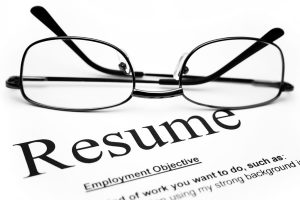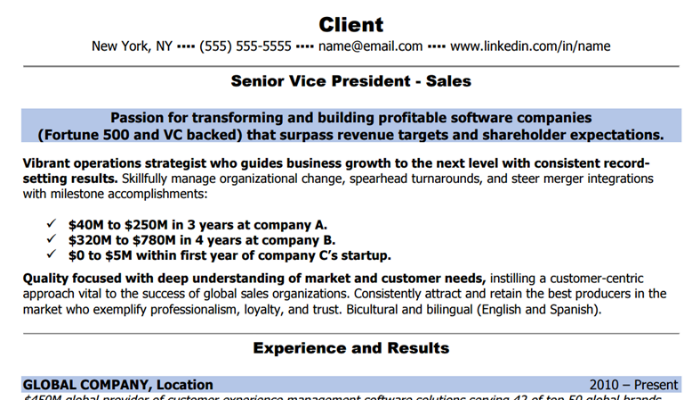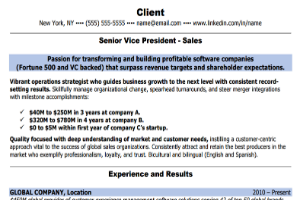 Your resume makes a positive first impression, or else you’re toast. This isn’t news to you — Right?
Your resume makes a positive first impression, or else you’re toast. This isn’t news to you — Right?
But, who wants to participate in a job search that trucks on longer than necessary? You are forced to research and apply to even more jobs. Yuk!
And then, here comes the fun part: Wash. Rinse. Repeat.
Unfortunately, companies do such a terrible job of providing candidates with resume feedback and scarcely send “thanks, but no thanks” letters to candidates that you’re oftentimes left wondering: is it my resume, or me?
Let’s talk about the 4 key points to ensuring your resume is *actually* working for you, and not against you.
This way, you’ll get fewer of those no-thank-you letters and receive more calls for job interviews.
Sound fair?
EDITORIAL NOTE: SEE THE RESUME CRITIQUE FORM (BELOW) TO ALSO HELP YOU.
Okay, let’s start with one of the biggest concerns about your resume:
1. Resume Format
The definition of resume format is simply this: the layout (e.g. what’s listed first, last, and in between) and categories (e.g. education, experience, public speaking, and executive affiliations) of your resume. I apologize if you were expecting a far more advanced explanation, as your resume format is probably the easiest to identify.
Now that you know what resume format means, now it’s time to start applying exactly “what that means to you.”
Most top-tier management and executives resumes follow a not-so-mysterious resume format:
- Resume Summary
- Professional Career
- Education
- Professional Affiliations
There are other, less popular possibilities for categories, including non-profit work, technical skills (e.g. software), fresh and relevant professional awards, and publications. Generally, these categories are listed only when they are of particular interest to the employer’s you’re seeking employment with.

Of course, you might have a keyword/key phrase category and possibly a category filled with some of your top achievements — both generally located within the top 1/3 of the first page of the resume. Click here to learn a bit more about hiring and resume trends you should know about (e.g. find out what % of resumes are being viewed on smartphones and mobile devices?)
There are some categories you wouldn’t want to list.
For example, you wouldn’t list a category for your volunteer work if that work is completely unrelated to your ideal job target.
You also wouldn’t list publications in your resume, unless prospective employers view your writings/interviews as true value.
See what I mean?
Fresh and relevant details in your resume. No exceptions.
The one BIG MOVABLE COMPONENT you’ll find in resumes these days are achievements. Achievements are finding their ways into most other resume categories; e.g. education and resume summary.
♦ READ MORE: To learn more about what NOT to put in your resume, here’s a list of 5 resume exclusions. And here are a few quick tips to help you deal with career negatives in your resume.
2. Resume Design
Resume design simply means how visually diverse and appealing your resume is. This includes size and type of fonts used, color, bolding, italics, lines, spacing, background colors, and so on.
Just 10 years ago, using color in your resume was highly frowned upon. Now, that view has changed (not 100% though!) with the onset of technology. Resumes are viewed more on computer screens than ever before. If you remember, 10 years ago, we printed and mailed, emailed, and faxed (gasp!) our resume packages for job openings.
Well, that’s all changed.
When’s the last time you printed anything, let alone your resume?
This means resumes are almost exclusively being viewed as soft copy (fancy way of saying “on screen”).
You can’t go too crazy with design, however. ATS systems are “reading and considering” your resume for positions — and if you’re using a visual design that hinders your resume’s ability to scan well through ATS systems, you could be shooting yourself in the foot.
So, what do you do?
Compromise seems to be the best option when considering resume design.
Be sure to check out the ATS checklist I linked to above. That will go a long way to helping your “reel in” the design on your resume.
3. Resume Content
Alright, here’s the toughest part of any resume project.
Most resume writers will tell you that the best way to approach writing the content of your resume is to first start with the easiest sections first; e.g. education.
Then, progress to writing the content for each of your most recent positions.
Start with describing a typical day in your job. What consumes your time?
This might sound like an odd resume writing technique, but by writing 1-2 paragraphs that describe a typical day for you (the tasks that demand most of your attention), you’d be surprised how quickly you can flesh out your resume.
Take the following ramblings as an example:
When I arrive @ the office, I focus my attention on reviewing the tech logs for the past 12 hours. I identify what security and connectivity issues happened overnight. Plus, what’s been resolved and what’s still being addressed. I immediately touch base with network engineers and technical managers to discuss any pressing issues that may affect the 3,000 users working at the company’s 3-state locations.
These ramblings then translate to resume content that looks like this:
Manage network and IT staff (24 total), overseeing network security, remote VPN access, and troubleshooting for the company’s enterprise network that supports 3,000 users at the San Antonio, Cincinnati, and Fort Lauderdale locations.
To boost the performance of your resume more, weave a few achievements into your resume content as well.
Achievements generally focus on cost savings, increases in revenue, and so on.
An example of an achievement for a risk manager could be:
Managed the risk and compliance budget of $1.8M. Initiated cost-cutting measures, such as vendor consolidation and staff reductions, which reduced the budget 20%.
4. Resume Relevance
Last, and certainly not least, is resume relevance.
With the volumes of information in resumes that recruiters and hiring managers need to sort through, make sure yours is focused on your career target.
This is where “resume auditing” comes into play. Once you write your resume, let it sit for a day.
Then, pick it up and read each sentence and ask your “Is that relevant and important to my job target?”
When the answer is no, it’s time to start chopping out those details and replacing with more important details.
Anytime you review your resume, you need to verify that your:
- Resume is targeted and supports the job goal
- Resume includes relevant jobs covering the last 10-12 years of experience
- Resume does not state the reason for leaving any job or other negative information
- Resume does not contain irrelevant information
These resume critique points touch the surface of identifying if your resume is a good marketing document that will peak the interest of a recruiter or hiring manager, and generate interviews. Rewrite or seek professional assistance if you think yours needs improvement to capture the essence of an effective resume.
RESUME WRITING HELP: Click here to get help rewriting and improving your management/executive resume.
Free Checklist To Critique Your Own Resume
Below I’m including a checklist so you can critique your own resume.
The purpose of this critique is to assess how well your resume meets conventionally accepted resume principles and to identify areas of improvement to increase your chances of being selected for a job interview. Your resume generally receives a 30-second review when first received by a prospective employer.
Therefore, it is critical that your resume makes a positive first impression and compel the reader to want to call you for an interview.
RESUME FORMAT
The resume is in the correct format to best showcase the jobseeker’s career history:
1. Length, format, and formality (tone) are appropriate for the applicant and the position being targeted
____Yes
____Needs Improvement
2. Resume is in a “modern” format (meets current standards)
____Yes
____Needs Improvement
3. Resume is free of errors (including spelling, punctuation, capitalization, grammar, and syntax errors)
____Yes
____Needs Improvement
**Don’t rely extensively on MS Word’s spellcheck. Use an alt tool, such as Grammarly.com, for this.
4. Information is easy to locate on the resume
____Yes
____Needs Improvement
“LOOK” OF YOUR RESUME
1. Resume is obviously not a template
____Yes
____Needs Improvement
2. Resume is visually appealing and easy to read, and includes sufficient white space
____Yes
____Needs Improvement
3. Resume will stand out compared to other resumes
____Yes
____Needs Improvement
4. Appropriate font and sizes are used throughout the resume
____Yes
____Needs Improvement
5. Design elements (lines, bolding, bullets, color) are appropriate
____Yes
____Needs Improvement
RESUME CONTENT
Content wins interviews. Your resume should be unique to you and showcase your value to a prospective employer.
1. The resume is an effective marketing document, not simply a work history (“obituary resume”). The resume tells a compelling story about the jobseeker’s experiences that sustains the reader’s attention
____Yes
____Needs Improvement
2. The value of the applicant is immediately visible on the resume (especially the top 1/3 of the resume)
____Yes
____Needs Improvement
3. The resume makes it clear what position or kind of position the jobseeker is targeting (without using an “Objective” statement)
____Yes
____Needs Improvement
4. The resume effectively communicates the jobseeker’s value to the prospective employer in one of more of the following ways:
– Make them money – Save them money – Save time – Make work easier – Solve a specific problem – Be more competitive
– Build relationships – Expand business – Attract new customers – Retain existing customers
____Yes
____Needs Improvement
5. Resume contains powerful, concise, accomplishment-oriented writing designed to increase the reader’s interest and stimulate a request for a job interview
____Yes
____Needs Improvement
6. The resume speaks the reader’s language with industry-specific language and relevant keywords throughout the resume
____Yes
____Needs Improvement
7. The resume contains persuasive, high-impact statements that sell the jobseeker’s qualifications as the best candidate
____Yes
____Needs Improvement
8. Information provided is appropriate to targeted job and includes enough detail to substantiate the position and salary desired
____Yes
____Needs Improvement
9. Includes specific, quantifiable accomplishments which highlight a problem/challenge, action taken, and result that quantify things like: how much, how many, how big, percentages, dollar amounts
____Yes
____Needs Improvement
10. Accomplishments highlighted do in fact support the jobseeker’s career goals
____Yes
____Needs Improvement
RESUME RELEVANCE
1. The entire resume is targeted and supports the job goal
____Yes
____Needs Improvement
2. The resume does not include personal information (such as a photo, hobbies unrelated to the job target, or personal data)
____Yes
____Needs Improvement
3. The resume does not include a reason for leaving any job or other negative information
____Yes
____Needs Improvement
4. Includes relevant jobs (covers the last 7-10 years of experience)
____Yes
____Needs Improvement

